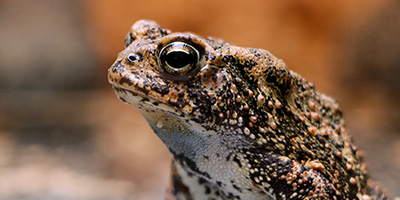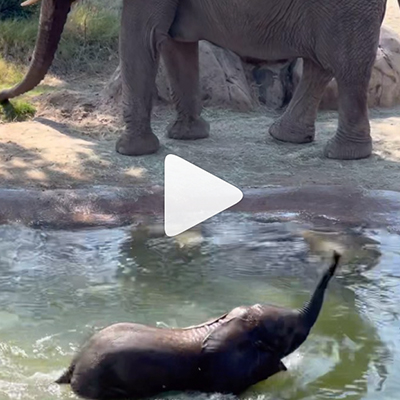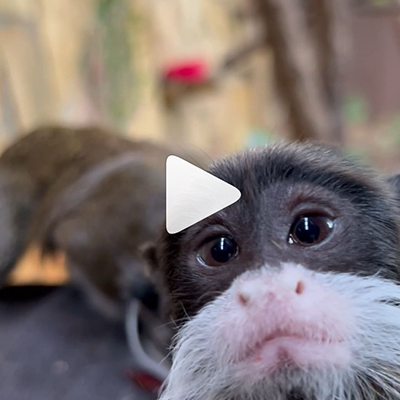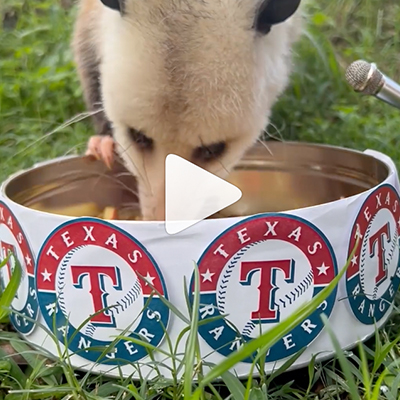Upcoming Events
Dec. 2 & 3
SAVING AMPHIBIANS
Inside the Amphibian Rescue Center at the Dallas Zoo
By Maanee Latheef, Social Media Specialist
Amidst the swinging gibbons and the majestic tigers in ZooNorth lies a hidden sanctuary at the forefront of the battle to rescue amphibians from the brink of extinction: the Amphibian Rescue Center.
“Amphibians play a vital role in our ecosystems,” said Laura Wandel, Dallas Zoo’s associate curator of ectotherms. “They are known as sentinel species,” meaning that their presence is an indicator of an ecosystem that is healthy and, in their absence, an ecosystem that is at risk.
Tragically, more than 40% of all known amphibian species are under the threat of extinction. Amphibian populations are declining at an unprecedented rate due to threats such as habitat destruction, disease, and climate change. Among these imperiled amphibians is the Texas native Houston toad, the dusky gopher frog, and the Puerto Rican crested toad.
Since opening its doors in 2017, the Amphibian Rescue Center has been a beacon of hope for these three species through its remarkable breeding program. Inside the Center exists carefully managed assurance colonies.
As Wandel explained, “Assurance colonies serve as genetic safe havens for wild populations in crisis, offering a lifeline for species survival in the face of environmental catastrophes.”
“Breeding pairs are picked from these colonies to maximize genetic diversity.”
Among these assurance colonies resides the only toad endemic to the lush landscapes of Puerto Rico and the Virgin Islands: the Puerto Rican crested toad. Measuring just 4.5 inches when fully grown, these toads boast textured, pebbled skin, striking marbled golden eyes and a long, upturned snout, making them instantly recognizable. Yet, in the wild, they have become an exceedingly rare sight.
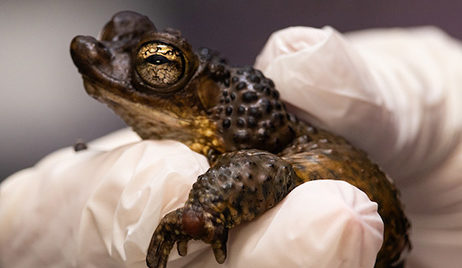
“They are known as sentinel species,” meaning that their presence is an indicator of an ecosystem that is healthy and, in their absence, an ecosystem that is at risk.
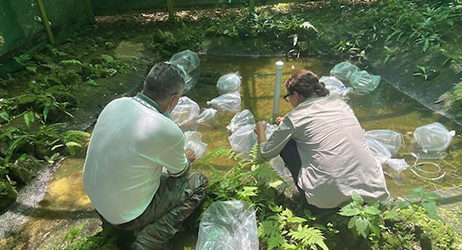
Declared extinct in the Virgin Islands, these toads exist only in Puerto Rico today, with a fragile population of just 1,000-3,000 adult individuals. This is why the active involvement of your Dallas Zoo, as one of just a handful of AZA-accredited zoos and aquariums supporting the conservation effort and breeding program of the Puerto Rican crested toad, is so critical to safeguarding the future of this species.
Breeding small, elusive amphibians is a meticulous, detail-oriented task. The process for Puerto Rican crested toads is one that begins each year with preparations starting in July. Our team of expert zoologists acts with precise timing and follows a series of steps designed to replicate seasonal changes and the toads’ natural breeding conditions.
As described by Wandel, “We implement a cooling cycle, lowering the room temperature to 66 degrees. Then, we gradually raise the temperature, introduce the males and females together in an aquarium, and start the most important step – introduction to the rain chambers.”
Wandel emphasized on the pivotal role of these carefully designed rain chambers at the Center, “One of the key things that trigger Puerto Rican crested toads to breed is rainfall.”
In fact, it is the lack of rainfall in their natural habitats that is disrupting their already precarious breeding cycles. Designed to simulate at least four inches of rainfall, the rain chambers provide the necessary aquatic environment to promote breeding, the fertilization of eggs, and the development of tadpoles.
A single female Puerto Rican crested toad can lay up to 15,000 eggs. Once the egg strands are fertilized, our zoologists must move quickly. Due to their rapid life cycle, tadpoles can be ready for release in just eight days after the eggs are laid. Much like transporting a fish, these tadpoles are placed in water and oxygen-filled bags, secured inside a Styrofoam box, and safely arrive in Puerto Rico for release in under than 24 hours.
“We had our first successful breeding of Puerto Rican crested toads in 2019,” Wandel noted. Since then, the Amphibian Rescue Center has successfully reintroduced over 25,000 Puerto Rican crested tadpoles into their native habitat. Each released tadpole symbolizes a small victory in the battle against extinction and holds the promise for a brighter future for this species.
“We are just a small part of a much larger program.” Wandel stated.
“We can only hope that between our combined efforts, and the habitat recovery initiatives on the ground, their population numbers bounce back.”
Reserve your free member tickets to visit the Puerto Rican crested toads that call the Dallas Zoo home in the Herpetarium today!
Growing a Wilder Future for North Texas
By Meridith Semmelbeck, Member Project Manager
Here at the Dallas Zoo, we love our animals. But one of the best ways to serve them – and all of North Texas – has less to do with zoology and more to do with horticulture. Behind the scenes, not far from the elephant barns, the Zoo is home to a Native Plant Propagation Center which consists of a large greenhouse and a smaller “hoop house,” and has been working to protect native Texas wildlife since early 2022. The Zoo, in partnership with Texas Conservation Alliance – an organization committed to protecting and preserving wildlife and habitats – works to build community resilience and plant diversity in North Texas through restoration, education, conservation, and propagation of native plants.
This is done by sharing plants, seeds, and knowledge with the community through a variety of programs. The Propagation Center partners with schools, community groups, and the general public to provide hands-on learning about native plants and conservation. They also help identify ecosystems or areas that have been degraded by invasive species, grow plants specifically suited to these targeted areas, and help organize “rewilding” efforts in which native plants are used to rebalance the health of these struggling areas.
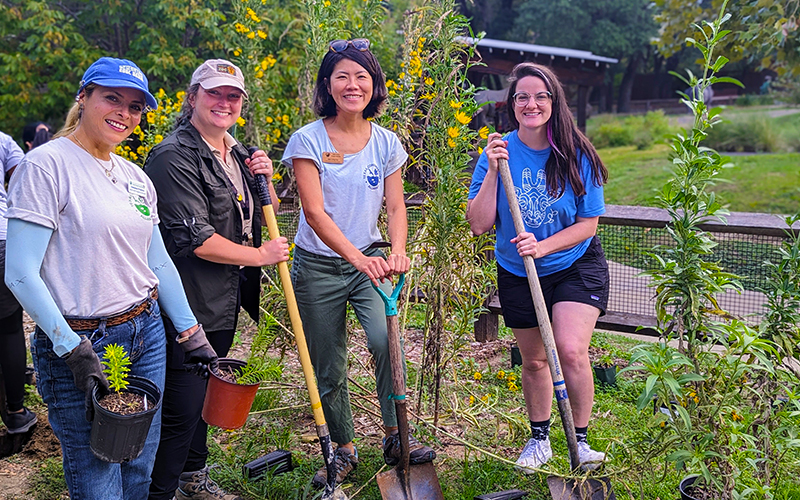

Why Native Plants?
The reason for these efforts is that native plants work in conjunction with wildlife and the entire ecosystem to maintain a healthy balance between all living things. Using native plants which are not treated with herbicides or pesticides can protect the health of pollinators and give them the correct migratory cues to help keep them on track.
Native plants also greatly reduce water consumption – sometimes even eliminating the need for supplemental watering once the plants are established. In a partnership with the Greenhill School, the Propagation Center helped rewild a field on their campus. The school faithfully watered the native plants until they were well established, and the following summer they didn’t have to water a single time! The resulting pollinator garden is now a thriving example of how well adapted to our climate native plants are, and how much of a difference they can make to the conservation of water (not to mention the water bill!) versus non-native, thirstier species.
On the Horizon
Goals for the coming year focus on expanded propagation, accessibility, and education. This will be done through seed collection efforts to help ensure genetic diversity of native plants, and by establishing a partnership with the local horticulture department. Plans are also in the works to connect with area nurseries. In addition to providing them with surplus plants, the Propagation Center hopes to have the nurseries help educate the public about and advocate for the use of native plants. The more people planting native species in their yards, the greater the positive impact to the health of our ecosystems!
How You Can Help
We all know spring is when we see beautiful fields of bluebonnets and other wildflowers in Texas, but did you know the time to plant those seeds is now? Planting in November allows the cold temperatures of winter to break the dormancy of the seeds. That sets these plants up to bloom in spring and become robust food sources for pollinators like bees and butterflies. If you’d like to rewild your yard with some native seeds, stop by the Membership Booth on your next Zoo visit to pick up a complimentary seed packet and planting guide. You can also download our pollinator guide here and search for plants specifically suited to your zip code at this native plant finder.
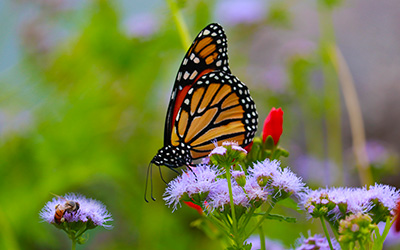
Take Action
Join us at our next Take Action event on November 18! You’ll help restore the prairie at the Zoo’s Monarch Mountain as we grow a buffet of wildflowers for monarch butterflies.
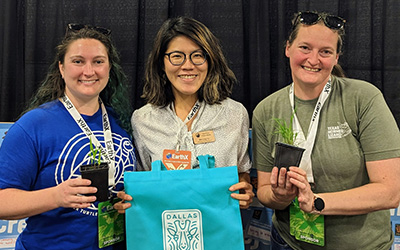
Volunteer
If you’d like to volunteer at the Native Plant Propagation Center, contact Mei Ling Liu at MeiLing@TCATexas.org.
In case you missed it
Thank you to our Sponsors
Signature Partners

Premier Partners

